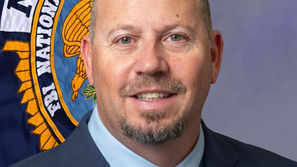Opinion: Our national pastime, part I
- Jim Glynn
- Aug 20, 2022
- 4 min read
In the movie “For Love of the Game” (1999), Jane Aubrey (Kelly Preston) brings an injured Billy Chapel (Kevin Costner) to the Emergency Room at a hospital in Colorado. When she has trouble finding a doctor to treat Detroit Tiger Pitcher Chapel’s badly cut hand, she shouts “Are we not in America? Isn’t baseball America’s favorite pastime?”
That’s an interesting question. In the late 19th century, sports writers began referring to baseball as the “national pastime,” and the sobriquet stuck. When I was growing up in New York City, every boy who was athletically inclined played baseball and/or its urban equivalent “stick ball.” In Brooklyn, the NY borough where I lived, if you weren’t a Dodger fan, it was best to keep a very low profile, especially during baseball season. To paraphrase former Dodger manager Tommy Lasorda, I bled and still bleed Dodger Blue.
The game, then
The game was pure. Well, at least after the 1919 World Series, when the outcome had been fixed by mobster Arnold Rothstein. By the time that I was rooting for the home team, many of the “greats” of baseball, like Babe Ruth and Lou Gehrig were gone. But we Dodger fans could count on our local heroes being on the field year after year.
Roy Campanella was behind the plate (until he was paralyzed in an automobile accident), Gil Hodges at first, Jackie Robinson at second, Billy Cox at third, Pee Wee Reese at short, Carl Furillo in right field, and Duke Snider in center. The left fielder sometimes varied, but Sandy Amoros was there for the 1955 World Series. Memorable pitchers (at least in my mind) were Sandy Koufax, Don Newcombe, Preacher Roe, and tireless reliever Joe Black. Newcombe pitched both games of a double-header on Sept. 6, 1955.
Players wore baggy knickers and soft, billed caps. Pitchers went nine innings (or more), unless they were being hit hard by the opponents. Pitchers batted ninth in the lineup. There was no such thing as a designated hitter. A shutout (or the nearly illusive perfect game) was the product of only one pitcher’s effort.
Sometimes our team won the National League pennant. But if they didn’t, we’d shout with conviction, “Wait ‘til next year!” An umpire’s call was final. There were no challenges, no video on which to re-run a play. And in the stands, men wore white shirts and ties; women wore housedresses.
The game, now
I suppose change was inevitable. And the door was opened in 1969 when “free agency” came to the big leagues. Through a complicated set of ever-changing rules, certain players can now jump from their team to another team that offers more money. Suddenly, baseball players became overnight millionaires. Naturally, the expense was passed on to fans who found themselves shelling out big bucks for tickets and at the snack bar.
Then, four years later, the American League adopted the designated hitter rule, meaning that pitchers no longer got a time at bat. Now, both leagues use it. (It should be noted that Dodger pitcher of the 1950’s Don Newcombe had a lifetime batting average of .271, better than several of the Dodger starters as of this writing. However, Preacher Row barely knew how to swing a bat. Yet, he hit one home run in his career, and some Dodger players in the dugout pretended to pass out while others set out a path of red rags to home plate, simulating a “red carpet” to welcome the “slugger.” Baseball was fun.)
Now, baseball is a business, and it runs according to a strict agenda. Starting pitchers are pulled after seven innings. Even Clayton Kershaw was pulled out after pitching seven perfect innings, ruining his chance of completing a perfect game on April 13. Only 23 perfect games have been pitched in major league history.
Batters now come to the plate in hard helmets with face guards. They wear batting gloves, shin protectors, and elbow protectors. Pitchers no longer have to throw the ball to give a batter an intentional base on balls; that just takes a signal from the manager to the home-plate umpire. That’s supposed to “speed up” the game, but now batters step out of the batter’s box after each swing of the bat in order to tighten their batting gloves. Games still last for about three hours.
Two other innovations have been added in an attempt to give paying customers less for more money. PitchCom, an electronic device, can now be used by catchers to signal pitchers, indicating what pitch is to be used and what location is preferred. Midway through the season, the Yankees claimed that the device allowed them to complete twice as many games in less than three hours, as compared to the previous year.
And finally, in order to avoid marathon extra-inning games, a “ghost runner” will be employed when a game is tied after the regulation nine innings. This means that, before each team comes to bat, it will automatically have a runner on second base. Therefore, an outfield single can score the potentially winning run.
As Yogi Berra might have said, “This ain’t baseball; it’s some other game played with a baseball.”
(Next week: What might the future hold for our national pastime?)
• • •
Jim Glynn is Professor Emeritus of Sociology. He may be contacted at j_glynn@att.net.


























Comments